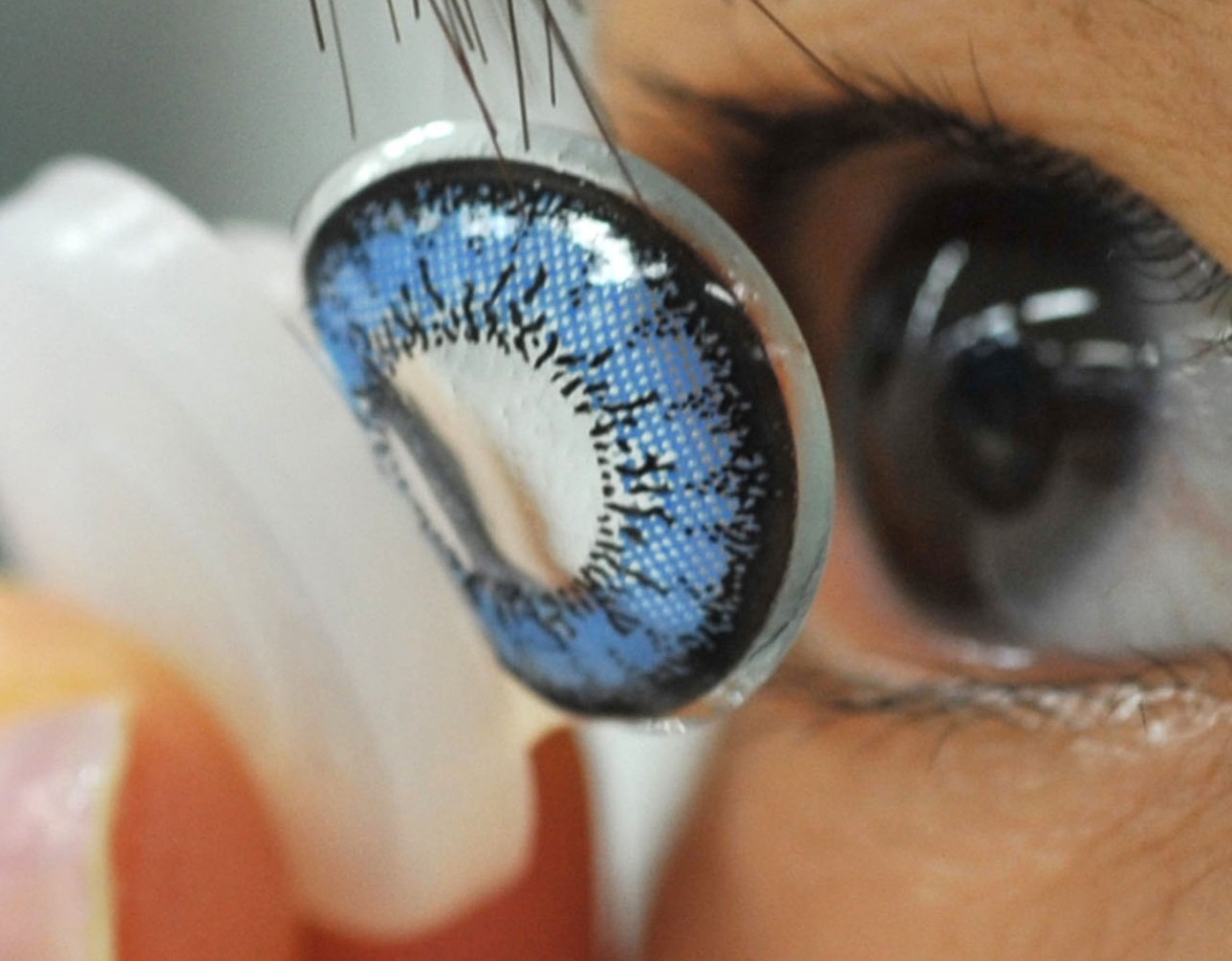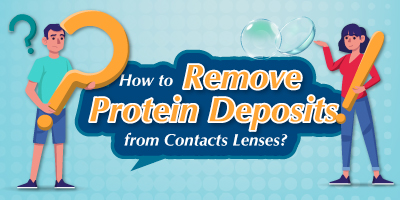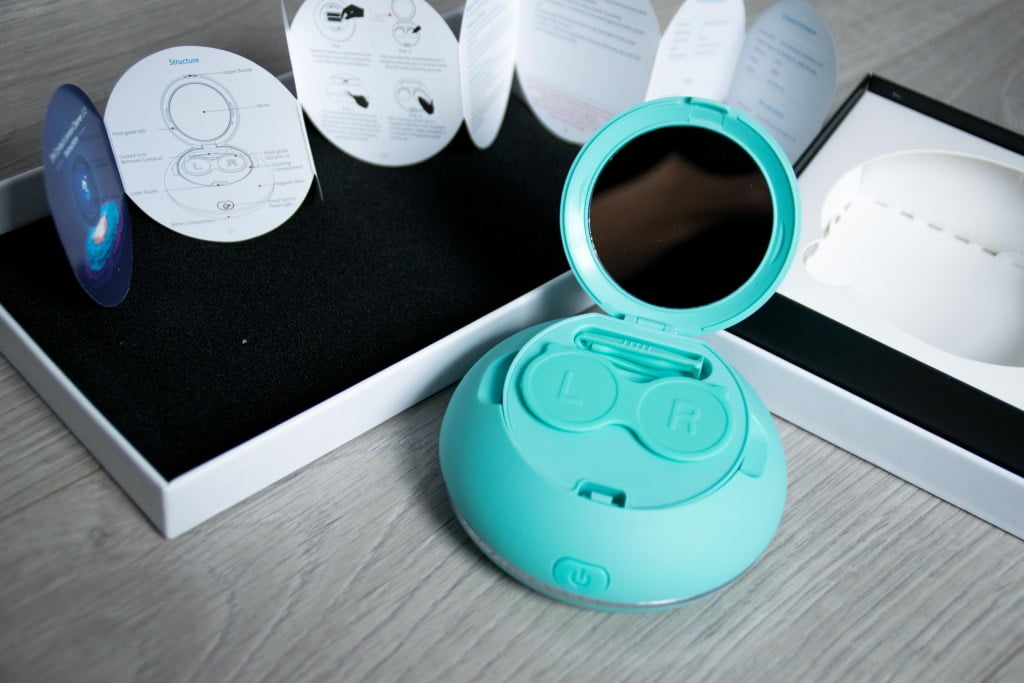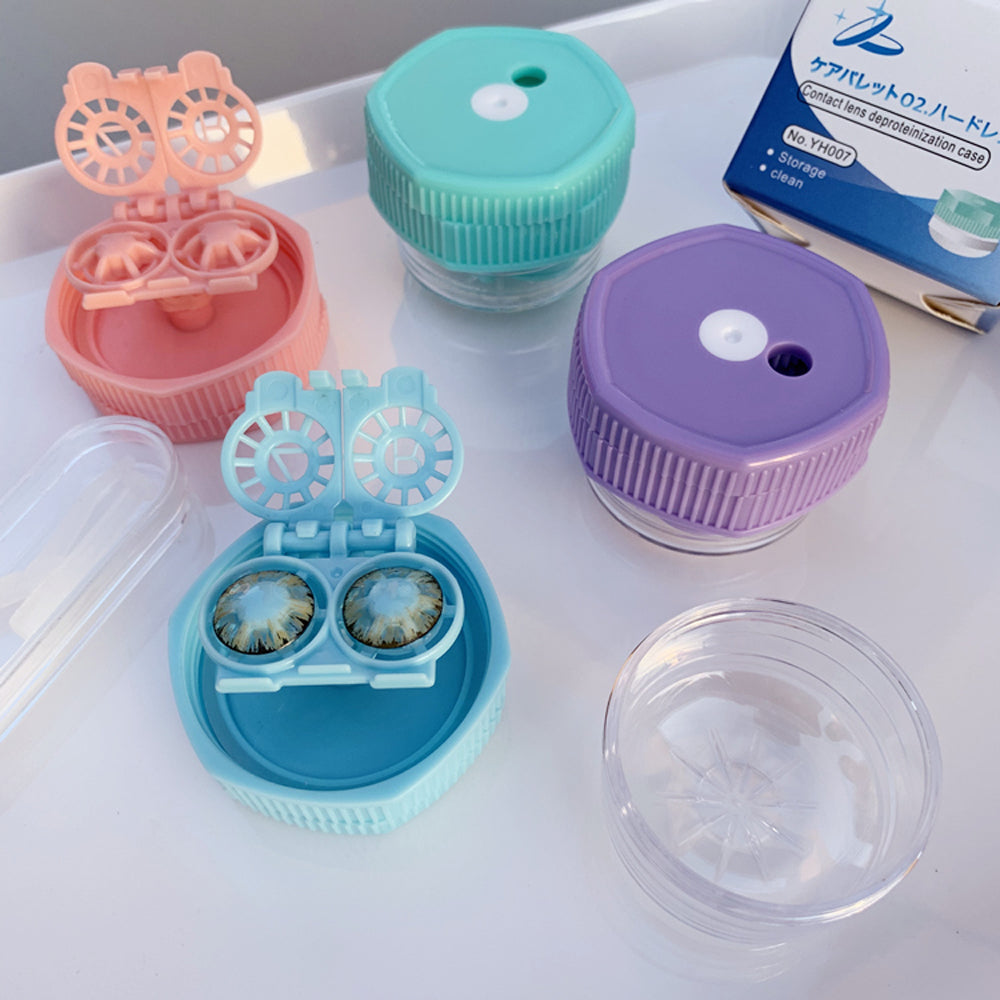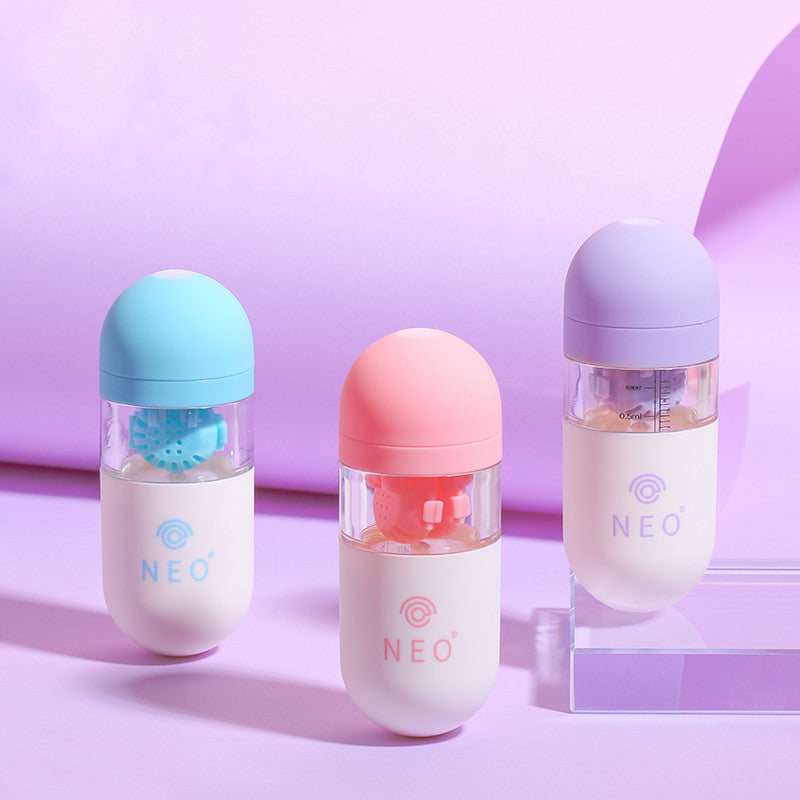Contact lenses are meant to provide crystal clear vision. Even so, soon after a few wears they start to become hazy. Contact Lenses are coated with protein that transfers from your tear film if you did not rinse it after each wear. There are several solutions available in the pharmacy on how to remove protein deposits and lipid buildup from contacts. It could be daunting at first to select a contact lens care regimen, yet talking with your doctor significantly helps.
Table of contents
- What is Protein?
- How Will Protein Affect Wearing Contact Lenses?
- Why and How Protein Build-up?
- How To Remove Protein Buildup From Contacts
- What is the Best Solution to Remove Protein Buildup From Contacts?
- How to Remove Protein Deposits From Contacts Effectively?
- Preventative Measures To Reduce Protein Buildup
- Conclusion
Estimated reading time: 9 minutes
What is Protein?
Proteins are naturally occurring molecules in our bodies, and they play a crucial role in the normal functioning of the human eye. Tears, for instance, contain numerous proteins that help protect and lubricate the eyes, maintaining overall eye health.
However, problems can arise when you wear contact lenses. Over time, protein deposits can accumulate on the surface of the contact lenses from the tear film that coats your eyes. This is more common with soft contact lenses because their material is more porous and can absorb these proteins.
How Will Protein Affect Wearing Contact Lenses?
The buildup of these protein deposits can have several negative effects:
- Discomfort and Irritation: The protein deposits can alter the smooth surface of the contact lens, causing discomfort, irritation, or a feeling of something being in the eye.
- Reduced Visual Acuity: Protein buildup can obscure the lens, leading to blurriness or reduced vision.
- Increased Risk of Infection: The accumulated proteins can serve as a breeding ground for bacteria, increasing the risk of eye infections.
- Contact Lens Intolerance: Over time, some people may develop an allergic response to the protein deposits, leading to red, itchy eyes, and potentially leading to contact lens intolerance.
Why and How Protein Build-up?

Most contact lens users do not realize that protein build-up occurs over time. Here are some possible ways on how it can develop.
- Improper Lens Handling – Lens calculi, also known as jelly bumps or mulberry spots, are formed when contact lenses are not handled in a hygienic way. It consists of lipid, protein, and calcium that raise circular bumps to penetrate the front surface of the contact lens.
- Environmental or Unwanted Debris – Potential debris from make-up or hair products can easily fall into the eyes. This will then coat the contact lens with a substance, causing blurry vision as well.
- Iron Deposits – This is mainly caused by rinsing or storing contact lenses in tap water. They are round and has a brown-to-orange color tone. We cannot emphasize this enough, though – do not clean your contact lenses with tap water, no matter how urgent it is.
- Fungal Deposits – This would usually occur when multiple pairs of contact lenses (for example colored lenses) are stored together. Fungal deposits also form due to exceeding the recommended amount of time they are kept in the contact lens solution.
- Windy and Cool Environment – Being in a windy or cool environment will also cause dryness to the eyes. Even if your eyes automatically produce tears in order to lubricate them, situations like these will leave residue on the lens. It will also contribute to protein build-up on the lens itself.
How To Remove Protein Buildup From Contacts
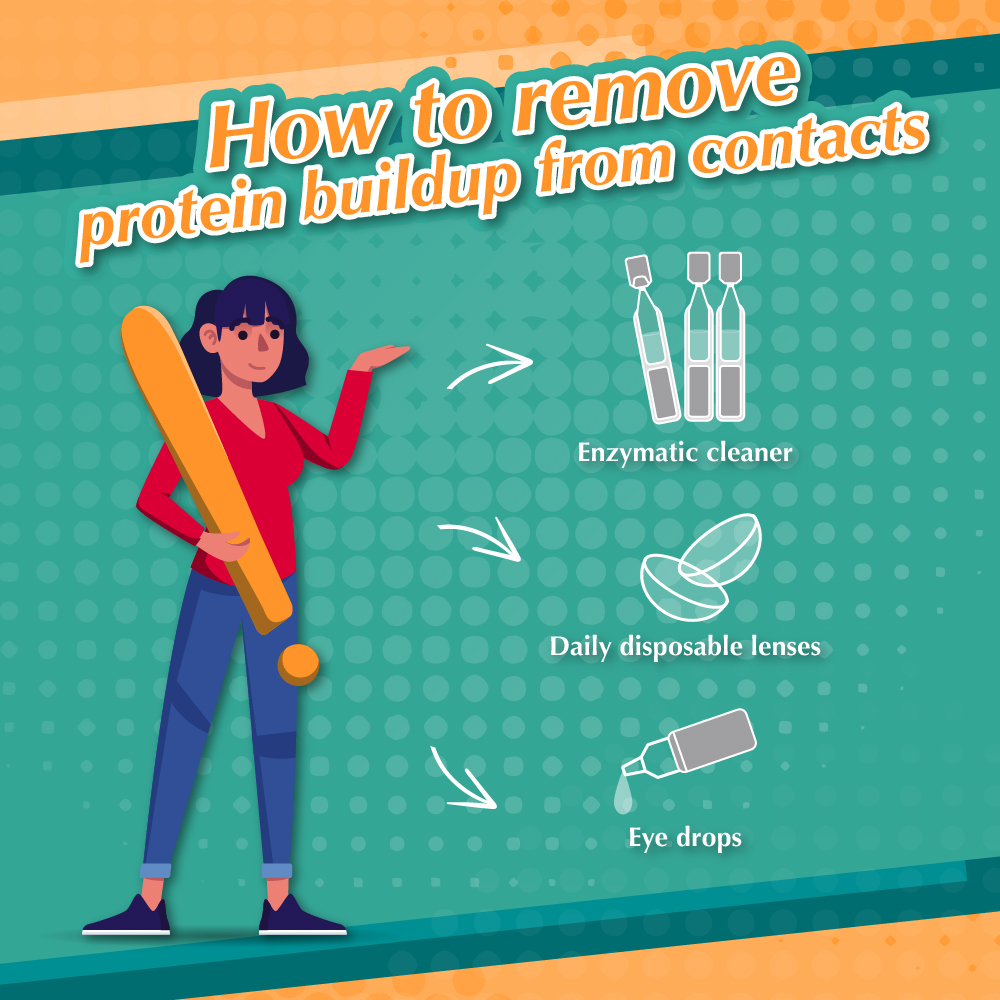
Enzymatic Cleaner
Enzyme cleaners are an effective way to remove protein buildup from contact lenses. Available in liquid or tablet form, these cleaners work by breaking down protein deposits on the lens surface.
To use an enzyme cleaner:
- First, wash your hands.
- Then, mix the enzyme cleaner with the appropriate solution, as per the product’s instructions.
- Soak your lenses in the enzyme cleaner mixture for the specified time, typically 15-30 minutes.
- Rinse the lenses thoroughly with cleaning solution and disinfect them as usual.
Soft contact lenses may require enzyme cleaning weekly, while RGP lenses may only need it monthly.

Daily Disposable Lenses
They can be the solution for contact lens users who have continued problems with protein buildup. The longer lenses have used, the risk of protein buildup and infection to the cornea that damages eye tissue is higher.
Eye Drops
Eye drops (in this case it must be lubricating eye drops) can clean your contacts and prevent protein build-up by lubricating the eyes. The disadvantage is constant strain and wind can still cause blockages.
Using eye drops daily are vital to maintaining your contacts. Not only this, you also need to clean your contact lenses with saline to keep your eyes healthy and maintaining good vision.
What is the Best Solution to Remove Protein Buildup From Contacts?
Multi-Purpose Solution
Multi-purpose solution is a one bottle ‘no-rub’ cleaning regimen that replaces cleaning and rinsing solutions. As mentioned by name it helps to remove debris by breaking down protein & lipid. Multi-purpose solution does not only clean & rinse your contact lenses, similarly, it also fights against bacterial accumulation.
Multi-purpose solution may contain preservatives, which is sometimes not very friendly to some patients. They are advised to use hydrogen peroxide solution as it is preservative-free.

Hydrogen Peroxide Solution
We use hydrogen peroxide solution to clean, rinse & disinfect contact lenses, yet it is not a one-step process. Never put your lenses directly in your eyes as this chemical can cause serious burns and injuries to your cornea. It requires a neutralizing process to make your lenses wearable again.
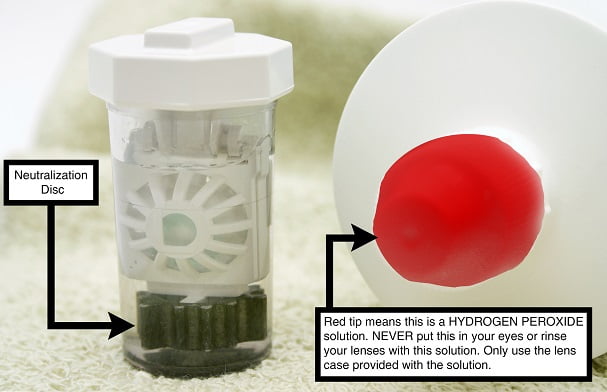
Hydrogen peroxide often comes with a special case featuring a neutralizer basket. It contains a built-in disc that breakdown hydrogen peroxide molecules into water and oxygen making it safe for you to wear contacts. With other cases, you may need neutralising tablets which further add a step to your daily cleansing routine.
Saline Solution
Saline solution is a solution of distilled water and salt. It safely rinses and stores your lenses. However, they can neither clean your lenses from protein buildup nor disinfect them from bacterial contamination. It is best to follow with other solutions to disinfect your contact lenses to keep it hydrated.

How to Remove Protein Deposits From Contacts Effectively?
There are a variety of cleaning devices available, each engineered differently and serves a different purpose. Most cleaning devices use ultrasonic sound waves or subsonic agitation. In this case, disinfection takes place through multi-purpose contact lens solution or ultraviolet light.
Some of the cleaning devices would also create an abrasive reaction during the disinfection process. If you are not a fan of loud noises, there are also other devices that make lesser sounds and cleans contact lenses effectively. These usually cost higher though.
Ultrasonic Devices
Ultrasonic cleaning devices such as 3N cleaner performs thorough cleaning because it removes protein build-up from contact lenses. It effectively removes impurities and protein debris within 30 seconds. Ultrasonic waves impact the lens structure adversely hence reduces the life span of contacts. With an ultrasonic device, it will help protect your contact lenses from further damage.
How does it work? When high frequency ultrasonic waves pass through the cleaning solution, it forms microscopic bubbles, expands, and will collapse within the liquid. The process, which is known as cavitation, causes oils, dirt, and other impurities to fall off the lens.
Electrolysis Devices
This method generates superoxides to clean and sterilize contact lenses in an electrolytic solution. The process incorporates hydrogen peroxide, a well-known antiseptic, for effective cleaning.
An electrolysis device features a lens case-like container with two chambers. Fill both chambers with disinfectant solution and immerse the lenses for thorough cleaning.
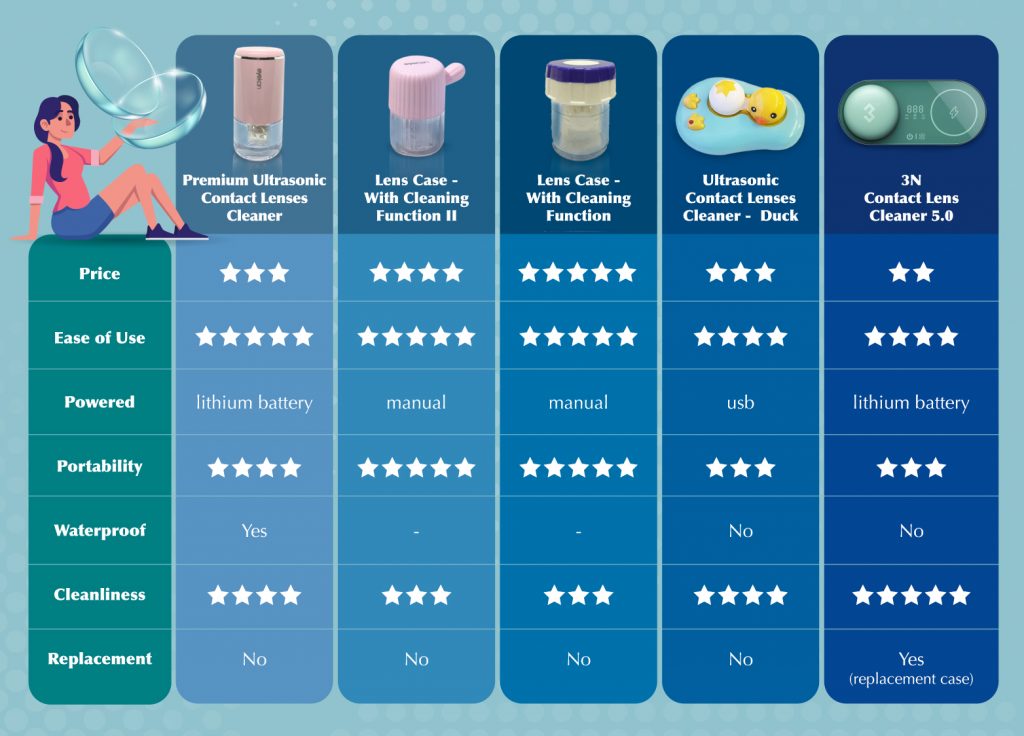
Preventative Measures To Reduce Protein Buildup
To minimize protein buildup, always perform the following
- Handle your contact lenses with care, and follow a consistent cleaning routine.
- Store your lenses in a clean case with fresh disinfecting solution, and replace the case every three months.
- Limit exposure to dust, smoke, and other environmental irritants.
- Additionally, consider using daily disposable lenses or lenses with built-in protein resistance to further reduce protein buildup.
Conclusion
It can be serious damage to your eyes if you did not take care of your eyes or the lens carefully. Changing the contact lens, remove protein buildup or even care regimen is not enough to ward off deposits. Blurred vision and spots in your field of vision could mean anything, so it’s best to get a doctor’s opinion on the matter.

Read More:

